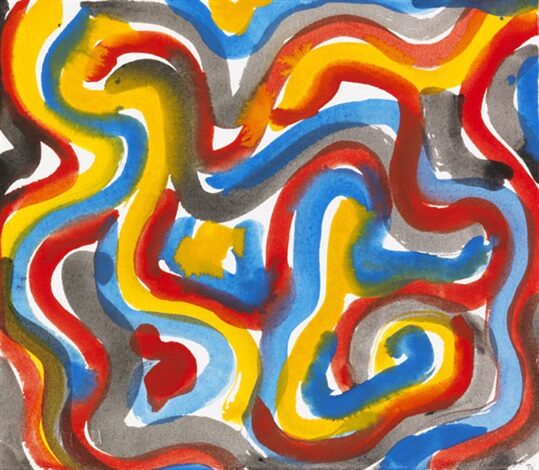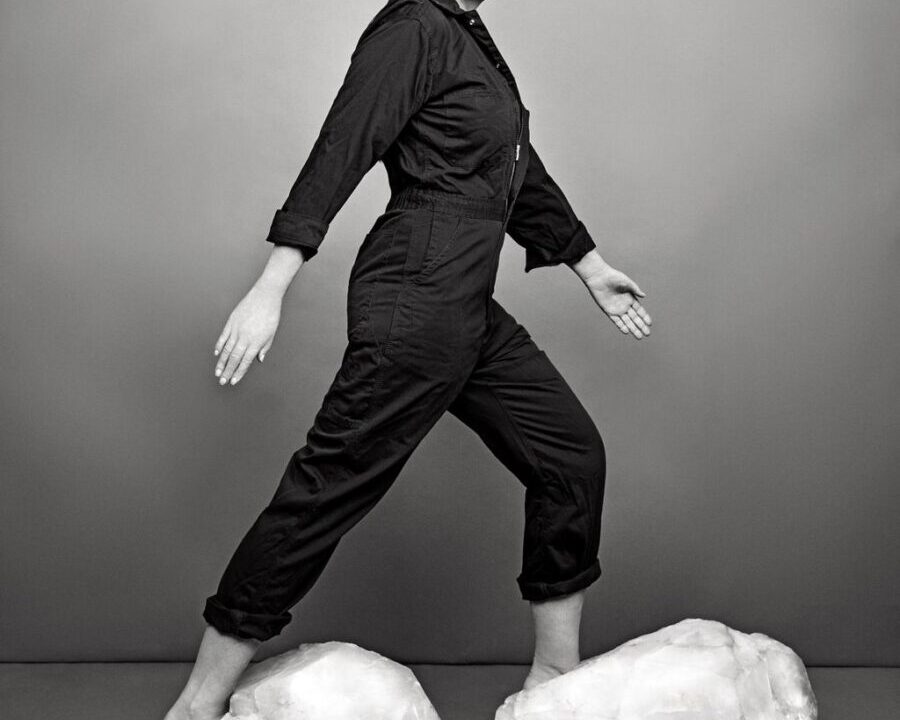The Value of the Works of Sol LeWitt
Sol LeWitt was an American artist that earned a prominent place in art history for his leading role in the Conceptual movement. His breadth of work provides a link between minimalism and conceptual art and included a range of mediums from sculpture, painting, drawing, and entirely conceptual pieces that only existed as ideas. For LeWitt, the directions for producing a work became the work itself and did not require an actual material presence to be considered art. LeWitt is regarded and referred to by a younger generation of artists as one of the seminal investigations into ‘idea’ and ‘concept’ art. The legacy of his work acts to challenge new thinking about what art can be.
“When an artist uses a conceptual form of art…the planning and decisions are made beforehand and the execution is a perfunctory affair. The idea becomes the machine that makes the art.” – Sol LeWitt
The Life of Sol LeWitt
LeWitt was born on September 9th, 1928 in Hartford, Connecticut to Eastern European Immigrants. His father died when he was 6 and soon after his mother moved him to New Britain, Connecticut where he attended art classes at Wadsworth Atheneum.
LeWitt attended Syracuse University and received his BFA before he was drafted in the Korean War. He made posters during his service for the Special Services and it was in Japan where he bought the first works that became the basis of an impressive personal art collection.
He moved to New York City in 1953 and studied at the Cartoonists and Illustrators School (now the School of Visual Arts). He worked for Seventeen Magazine making paste-ups, mechanicals, and Photostats and was hired as a graphic designer in I.M. Pei’s architecture firm.
The work that most influenced this emerging artist was Eadweard Muybridge’s serial photography, sequential studies of people and animals in motion. He incorporated seriality in his work to imply the passage of time or narrative and two important essays he wrote that defined the new movement included “Paragraphs on Conceptual Art” (1967) and “Sentences on Conceptual Art” (1969). LeWitt created work from the early 1960s that featured one of Muybridge’s figures in motion. His early sculptural works were made of open white cubes.
LeWitt’s first wall drawing was executed in 1968 and emphasized his attention on the premise of the artwork over the final product. Without the traditional support of canvas or paper, these wall drawings existed as a set of instructions that could be installed again and again. He often found assistants that could install his ideas better as he would leave instructions that were both specific and open-ended so that the resulting work would vary according to the interpretation made by the draftsperson that ultimately produced the work.
LeWitt moved to Spoleto, Italy in the late ‘70s and in 1983, his work underwent a major transformation as he began to experiment with India ink and color ink washes.
A collector of art himself, LeWitt and his wife accumulated over eight thousand artworks in their personal collection by his predecessors and contemporaries.
LeWitt died in 2007 in New York City but his works can still be seen in various collections and exhibitions around the world. His wall drawings are the subject of a solo exhibition at the Massachusetts Museum of Contemporary Art until 2033.
Major Exhibitions
The artist had his first public exhibition in 1964 in a group show curated by Dan Flavin at the Kaymar Gallery and his first solo show came in 1965 at Dan Graham’s John Daniels Gallery. Other notable exhibitions of his work include the following:
1966
“Primary Structures” exhibit at the Jewish Museum in New York
“10” exhibit at Dwan Gallery, New York
1969
“When Attitude Becomes Form,” at the Kunsthalle Bern, Switzerland
1970
Gemeentemuseum in The Hague presented his first retrospective exhibition
1975
“The Location of a Rectangle for the Hartford Atheneum” for the third MATRIX exhibition at the Wadsworth Atheneum Museum of Art
1978
The Museum of Modern Art, New York held a major mid-career retrospective
1987
Black Form: Memorial to the Missing Jews for the Skulptur Projekte Münster, Germany,
Other major exhibitions over his career include Sol LeWitt Drawings 1958-1992 and in 1996, the Museum of Modern Art, New York mounted a traveling survey exhibition: “Sol LeWitt Prints: 1970-1995”. A major retrospective in 2000 was organized by the San Francisco Museum of Modern Art. “Sol LeWitt: A Wall Drawing Retrospective”, a 25-year posthumous exhibit, was organized by Yale University Art Gallery, MASS MoCA, and the Williams College Museum of Art and will display LeWitt’s works over 40 years, including several never-before-seen drawings.
Collections
LeWitt’s works are found in the most important museum collections around the world including the following:
- Tate Modern, London
- Van Abbemuseum, Eindhoven
- National Museum of Serbia in Belgrade
- Centre Georges Pompidou, Paris
- Hallen für Neue Kunst Schaffhausen, Switzerland
- Australian National Gallery, Canberra, Australia
- Guggenheim Museum
- Museum of Modern Art, New York
- The Jewish Museum in Manhattan
- MASS MoCA, North Adams
- National Gallery of Art, Washington D.C.
- Hirshhorn Museum and Sculpture Garden
Value at Auction
The value of Sol LeWitt’s works can be demonstrated by several examples from recent auctions. His work entitled “Irregular Form” was estimated by Phillips at $6,000-$8,000 and sold for $10,000. “Forms Derived from a Cubic Rectangle: eleven plates”, a set of 11 aquatints in colors was estimated at $18,000-$25,000 and sold at auction at Phillips for $27,500.
At Sothebys, “Corner Piece No. 2” was estimated at $500,000-%700,000 and the lot sold at $881,000. This is noted as his most expensive artwork sold at auction.
Add the Works of Sol LeWitt to Your Own Collection
If you would like to add a work from Sol LeWitt into your personal collection, keep an eye out for upcoming live auctions in Dania Beach, Florida. Auction houses provide several opportunities to participate in person, over the phone, and online from anywhere in the world.
Selling the Works of Sol LeWitt
Do you have works by Sol LeWitt that you are interested in selling, appraising or cosigning? Call Joshua Kodner today, and ensure you receive the true value of your property.





